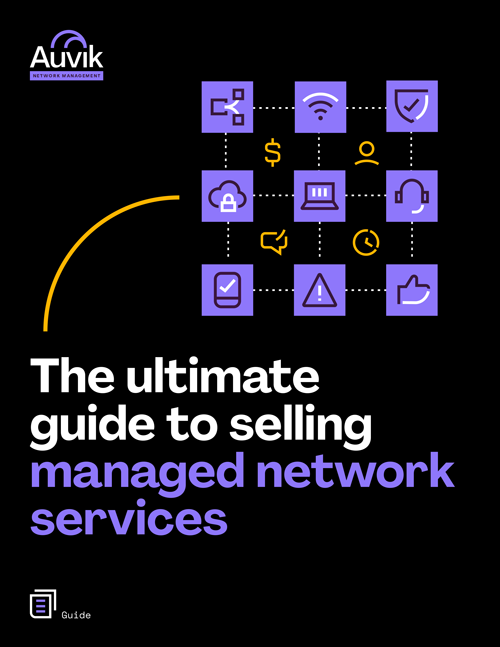In the IT world, buzzwords come and go. Some of them, like cloud, acquire immense importance. Others go the way of smell test and synergy and are more often used as jokes.
But here’s one buzzword—or more properly, buzz acronym—you can expect to matter: IoT. (In case you haven’t heard, that’s short for Internet of Things. And the term refers to everyday objects, from toasters to jetliners, that can exchange data over a network.)
“Bah,” you say. “I don’t need to worry about that yet. It’s still early days.”
Now is the time to start preparing your network to handle the massive bandwidth and security challenges that IoT will soon impose.
It’s true that Internet-connected appliances, sensors, vehicles, and so on are just now reaching the mass market, so networks aren’t yet feeling their full effects.
“And network-enabled objects aren’t new,” you point out.
True again. The term Internet of Things dates all the way back to 1999. Security systems and vending machines have long been managed remotely over the Internet, for example.
But just because IoT is neither new nor as extensive as it will be doesn’t mean you should be pushing it off for another day. Ever heard of Smart Cities? Now is the time to start preparing your network to handle the massive bandwidth and security challenges that IoT, and IoMT, will soon impose.
The water is rising
A massive flood of data is on its way. Consider that each of the Boeing 787s in Virgin Atlantic’s new fleet is expected to generate half a terabyte of data per flight.
Or that by 2020, cars connected to the Internet will produce 350 megabytes of data per second—or 30 terabytes per day—according to one estimate. That’s an increase of about 2,300% from 2013 rates, when only a fraction of vehicles were IoT-aware.
To look at the numbers another way, less than 1% of things that could be connected to the Internet actually are. And though there’s big disagreement over what the number of connected objects will rise to by 2020, everyone agrees the growth will be explosive.
Then, of course, there’s security. Protecting data and user privacy is hard enough when your network is juggling a motley array of PCs, mobile devices, on-premises servers, and cloud storage nodes.
Your Guide to Selling Managed Network Services
Get templates for network assessment reports, presentations, pricing & more—designed just for MSPs.

But that’s nothing compared to the attack vectors that will open up when magnitudes more devices come online — many of them with the potential to allow bad guys to not only steal private information, but also to wreak physical havoc by controlling appliances, for instance.
The IoT survival checklist
So what can you do now to make sure your network is ready to handle the coming IoT deluge? Here are some tips to get you started, especially if you manage a network at a small or mid-sized business.
- Dedicate a place on your network to IoT devices. Rather than simply mixing connected devices haphazardly among other types of hosts, consider setting up a VLAN just for IoT devices, which will give you lots of power to manage the ports and services they can access. You’ll be better positioned to mitigate security risks and make sure you’re distributing bandwidth for the IoT portion of the network as efficiently as possible.
- Build bigger data pipes to increase bandwidth capacity. You’re probably doing this already, or at least planning it, because more bandwidth seems to be a constant demand. But make sure sufficient bandwidth is a priority now rather than waiting until your network has too much data to handle. If you need to pitch the case to management for investing in heavier-duty pipelines or the switches and servers you need to manage them, here’s some ammo you can use.
- Increase storage capacity. More bandwidth usually implies more data to store, and IoT is no exception. Have a plan in place for storing the large amounts of data that IoT devices will introduce to your network, whether it ends up in the cloud, on your own servers, or on a combination of the two.
- Increase storage flexibility and performance. The storage challenge of IoT isn’t just about greater volumes of information. Because IoT devices like sensors and moving objects generate reams of data on the fly at variable rates, you’ll need to make sure your storage solutions are flexible and fast enough to handle it all. Implementing virtual or distributed storage solutions that can quickly scale as needed, or investing in some high-performance hardware for quick I/O, could help.
- Decide which IoT data to store. As sysadmin Ken Hess points out, “You don’t have to keep every bit of data that’s sent across a wire.” And you certainly don’t have to keep it forever. Depending on the types of IoT devices you’re dealing with and your organization’s compliance requirements, you’ll need to decide which types of data to store, how long you keep it, and whether your current backup routines need to be updated to accommodate IoT data.
- Make your network scalable. You probably already have some scalability in your network, but IoT requires much more, since IoT devices enter and leave the network at rapid, often unpredictable rates. Cars come and go offline. Power outages shut down thermostats. Appliances break unexpectedly. Events like these create an ever-changing load for your network, and you want to have balancers and monitoring tools in place to deal with it accordingly.
- Update your security policies. Owen Lystrup at OpenDNS recently noted that IoT brings security and compliance issues to a new level. Then again, so did the advent of widespread Internet connectivity 20-odd years ago, and we survived that. So, don’t panic. Instead, spend time now figuring out how your company will handle IoT security policies. Will you need to modify BYOD practices? Could IoT devices on your network raise new compliance issues within your industry? The answers to questions like these will vary from company to company, but now’s the time to start figuring them out.
- Build IoT-ready monitoring solutions. IoT doesn’t just bring more data to your network. It introduces richer, more specific data than ever before. Traditional monitoring software that only gives you basic information, like a device’s IP address and uptime, doesn’t provide the granularity you need for a network with a dizzying area of different types of IoT devices that spit out much more than basic connectivity information. You need next-generation tools that can tell the difference between a smartphone and a fridge, and that can notify you when either a storage server or an air conditioner goes down.
Staying afloat starts now
If you’re thinking, “My budget’s small and I don’t have the resources to do IoT the right way right now,” you’re not alone. Accomplishing everything listed above is tough for most companies with limited resources.
That said, a lot of these items don’t require a major financial investment. Planning an IoT-ready security policy costs only your time, for example. Optimizing your network’s software configuration to handle IoT is a similarly small burden.
Tasks like buying more bandwidth and storage are pricier, and you’ll probably need solid support from management to get those goodies. But if you start small and do everything you can with the resources you already have, you stand a good chance of persuading your boss that you’ll make excellent use of whatever additional budget he or she can give you to help with the coming IoT flood.




